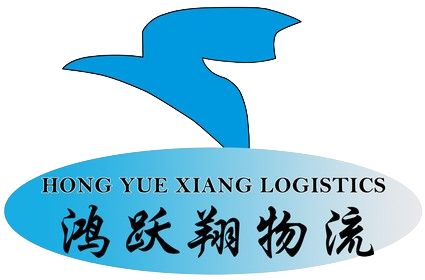News
Why Is Internal Logistics Essential for Business Efficiency?
Understanding Internal Logistics and Its Business Impact
Core Components of Internal Logistics Systems
Internal logistics encompasses various components, each playing a critical role in ensuring efficient operations within a business. Key elements include inventory management, transportation, and warehousing.
Inventory Management: This involves tracking and controlling stock levels to ensure there is neither excess nor shortage. It maintains a balance between supply and demand, which is pivotal for operational efficiency.
Transportation: Effective transportation systems ensure timely movement of goods within the organization, preventing delays and minimizing costs.
Warehousing: Proper warehousing facilitates organized storage of goods, aiding in efficient retrieval and distribution.
When different parts work together properly, operations run much better, which means workflows get smoother and people get more done. Take a look at what's happening with tech these days - automation tools and artificial intelligence are really changing how these systems function. Smart logistics programs have become game changers for many businesses. They let warehouses talk to trucks, track stock levels in real time, and coordinate deliveries without all the back and forth that used to waste so much time. The bottom line is that when everything connects well, the whole operation runs faster and costs less money in the long run.
Linking Logistics Efficiency to Operational Success
How well a company handles its logistics really matters for overall business success. When looking at what makes businesses thrive, efficient logistics tends to show up again and again as a key factor. Companies that manage their supply chains effectively usually see shorter wait times for products. This means they can react faster when customers need something, which ultimately improves how satisfied those customers are with the service they receive. Good logistics isn't just about moving stuff around faster either it builds trust with clients who appreciate getting what they want on time every time.
Reduced Lead Times: Efficient logistics can minimize the time taken from order placement to delivery, enhancing customer satisfaction.
Enhanced Service Delivery: Streamlined logistics contribute to consistent and timely service delivery, creating a reliable experience for clients.
Industry professionals keep pointing out that good logistics management gives companies an edge in today's marketplace. Companies gain this advantage when they streamline their operations and cut costs through smart logistics strategies, which makes them react faster to changes and adapt better to different situations. When businesses run their logistics efficiently, they can handle what customers want right now while building something solid for long term success. Think about it this way: companies that get their supply chains working well tend to stay ahead of competitors who aren't as focused on these behind the scenes operations.
Top Benefits of Streamlined Internal Logistics
Cost Reduction and Resource Optimization
Good logistics management helps cut down on operational costs while making better use of available resources. Companies that implement things like lean inventory approaches and smart transportation plans tend to save money they otherwise would spend on unnecessary stuff. Some actual numbers back this up too business owners who got rid of extra stock using better logistics methods saw their costs drop around 20%. Looking at what happens in practice, many businesses have managed to optimize their resources through smarter logistics, which means big savings on the bottom line plus greener operations. Cutting waste matters for two reasons it saves cash and it's good for the planet since there's less carbon created from overproducing items or shipping them unnecessarily.
Improved Productivity Through Automated Solutions
Getting serious about automation in logistics really pays off when it comes to getting things done faster. Take warehouses for instance where robots now pick items off shelves without breaking a sweat, while smart software is making sure trucks don't sit around waiting for loading. Companies have access to all sorts of tech these days that makes their internal logistics run smoother than ever before. The numbers tell the story too - orders get processed quicker and mistakes during deliveries drop dramatically once these systems are in place. Some studies actually show warehouses cutting down on manual work by about 40%, which means employees spend less time on boring repetitive tasks and more on what matters. This kind of efficiency boost isn't just good for the bottom line either; customers start noticing shorter wait times and better service quality across the board.
Strengthening Customer Relationships via Reliability
When logistics systems work well, customers tend to be happier and stick around longer because their orders arrive on time and without mistakes. Good logistics builds better relationships with clients, which naturally makes them satisfied enough to come back for more business. Looking at numbers such as how fast things get delivered and how many errors occur helps companies understand if their logistics setup actually meets customer expectations. Most industry professionals will tell anyone willing to listen that businesses investing in solid logistics infrastructure see real money savings down the road while building stronger brands that stand out from competitors. At the end of the day, people just don't want surprises when waiting for packages, so reliable delivery operations create trust that turns into lasting partnerships between companies and their clientele.
Best Practices for Internal Logistics Optimization
Adopting Scalable Warehouse Management Systems
Warehouse management systems that scale well matter a lot for companies expecting expansion since they bring both flexibility and better efficiency. What makes these systems valuable? They typically come with things like tracking inventory in real time, automating the picking process for orders, and working smoothly alongside other parts of the supply chain. Take a business moving away from paper-based inventory methods to something automated - mistakes drop dramatically while order accuracy goes way up. Look at Amazon as proof point; their warehouses run on sophisticated WMS tech that keeps tabs on millions of items across hundreds of facilities simultaneously. When shopping around for a WMS solution, focus first on whether the software grows with your business, how easily it connects to existing systems, and if the interface won't drive employees crazy. Getting these basics right means the system will handle today's requirements but also stand up to tomorrow's challenges. Rolling out a new WMS isn't just about buying software though. Real success comes from proper planning ahead of time, making sure staff knows what to do, and bringing everything online gradually so operations don't grind to a halt during the switch.
Integrating Data Analytics for Smarter Decision-Making
In today's logistics world, data analytics isn't just helpful anymore—it's essential for making smart choices and boosting overall performance. When businesses look at their data patterns, they find better ways to plan delivery routes, figure out what customers will need next, and keep inventory levels just right. Companies that actually put data to work see real results: faster deliveries and happier customers who get what they want when they want it. Software solutions from big names like SAP and Oracle help tie all this data together so managers can watch operations happen in real time and react quickly. Many logistics firms using these systems report cutting costs while getting things right more often. Getting started with data analytics means picking the right software for the job, teaching staff how to read and understand data, and creating an environment where people trust numbers rather than gut feelings. This approach keeps companies ahead of the curve in markets that never stand still.
Technologyâs Role in Modern Internal Logistics
Automation Tools Driving Process Efficiency
Automation has become a game changer in today's warehouse operations. Companies are increasingly turning to tech solutions like AGVs and robotic arms to cut down on human labor while getting things right the first time. The results speak for themselves too many businesses have seen their output jump by around 40% after installing these systems, plus they notice fewer mistakes happening day to day. What's exciting now is how these machines keep getting smarter. We're starting to see warehouses where robots can assign tasks to each other automatically and even figure out better ways to work without human input. This kind of advancement means logistics managers might soon find themselves overseeing operations that adapt on their own to changing conditions throughout the day.
IoT and AI Applications in Inventory Control
The combination of IoT and AI tech has really transformed how companies handle their inventory stock. These systems give managers much better visibility into what's happening on the shelves right now, plus they make tracking errors much less likely. Sensors placed throughout warehouses keep tabs on where products are located and what condition they're in. Meanwhile, smart algorithms crunch all this information to figure out when things will sell and how much should be kept in stock at any given time. Take Best Buy for instance they implemented these solutions across their supply chain network and saw something pretty impressive stock counting mistakes dropped by around half within just a few months. Research shows that businesses adopting such technology not only save money from wasted goods but also serve customers better because they know exactly what items are available when someone walks through the door or clicks buy online.
Recommended Products
Hot News
-
A Vital Freight Mode Connecting The World
2024-01-16
-
The Continued Development Of Our Freight Shipping Company
2024-01-16
-
The Importance Of A Trucking Company
2024-01-16

 EN
EN
 AR
AR
 FR
FR
 DE
DE
 PT
PT
 RU
RU
 ES
ES
 TR
TR
